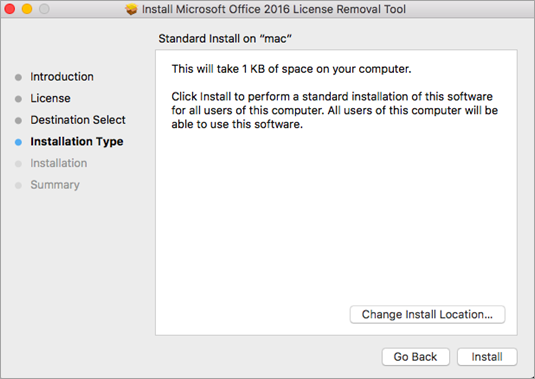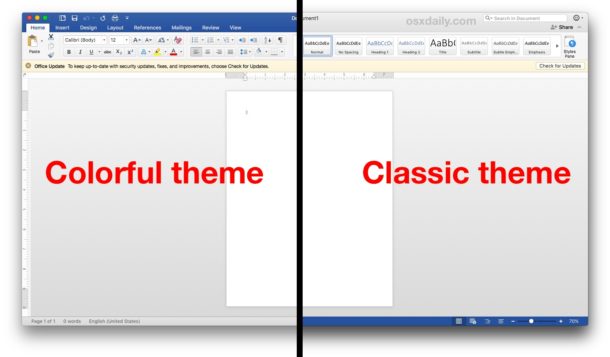In the Keychain Access app on your Mac, choose File Add Keychain. Select the deleted keychain file. You can also open the Keychain file in the Finder or, if you use Time Machine to back up your files, you can restore the file with Time Machine. Keychains are usually located in the Keychains folder in the Library folder in your home folder. How to Uninstall Office on a Mac using App Cleaner & Uninstaller. To delete MS Office quickly, you can download a special Office Uninstaller tool called App Cleaner & Uninstaller. It automatically finds all the service files of any app and allows you to uninstall applications completely. This article applies to: 7.x Briefcase for Mac. Problem: No way to change credentials; user unable to authenticate with different credentials Resolution: Remove O365 credentials from Keychain Access. How to remove O365 credentials from Keychain Access: Use Command + space to launch Spotlight Search. Start typing Keychain Access in the Search field. Launch the Keychain Access and locate all.
There is a whole three-part process to manually uninstall office from Mac: Move to Trash. Remove from the Library folder. Remove apps from Mac Dock. Move to Trash: You can completely delete MS office from the system by following the steps mentioned below: Go to Finder. Open Application. Press the Command button. Therefore, people delete the old identities from Mac Outlook 2011. But, it is advised to take a backup of all identities. Because, if you have not taken backup and delete Office 2011 identities for Mac data records, it starts creating multiple problems for you. So, you should rebuild the identities, if you delete them without having a backup.
How do I uninstall OpenOffice.org?
Apache OpenOffice version 4 (current)
- On Windows, you can use the Add/Remove Programs option in the Control Panel.
- If you installed OpenOffice through another method (an RPM, or a Debian package), using the appropriate package removal tool is best.
- On the Mac, just drag the OOo icon from the Application folder to the Trash icon.
OpenOffice.org version 2 or 3 (old)
- On Windows, you can use the Add/Remove Programs option in the Control Panel.
- If you installed OpenOffice.org through another method (an RPM, or a Debian package), using the appropriate package removal tool is best.
- On the Mac, just drag the OOo icon from the Application folder to the Trash icon.
OpenOffice.org version 1 (oldest)
On Windows, you can use the Add/Remove Programs option in the Control Panel. On Linux, you can use ./setup and choose the Remove option.
I found these instructions on Microsoft's support site. - Not sure if I am allowed to post them here...
Remove Office 2016 for Mac applications
From Microsoft support page - https://support.office.com/en-us/article/Troubleshoot-Office-2016-for-Mac-issues -by-completely-uninstalling-before-you-reinstall-ec3aa66e-6a76-451f-9d35-cba2e14 e94c0
IMPORTANT Follow the steps in this article only if you've tried the usual Office for Mac uninstall process and are still having difficulty reinstalling or starting Office applications.

To completely uninstall Office 2016 for Mac you must remove the applications, supporting files, and keychain entries, plus any icons you've added to the Dock. Once you've removed everything, empty the Trash and restart your Mac to complete the process.

You must be signed in as an administrator or provide an administrator name and password to complete these steps.
There are several things to remove. This article steps you through each one.
Step 1: Remove Office 2016 for Mac applications
- Open Finder and click Applications.
- Command +click to select all of the Office 2016 for Mac applications
- Ctrl+click or right-click the applications you selected and click Move to Trash.
Step 2: Remove supporting files from the Library and User folders
Remove files from the Library folder, you'll need to first set the Finder View options.
- Open Finder, click Go > Computer, and then click View >as Columns.
- Go to Macintosh HD > Library > LaunchDaemons.
- In the LaunchDaemons folder, ctrl+click or right-click this file if present, and then click Move to Trash.
com.microsoft.office.licensingV2.helper.plist (if present)
- Go to Library > PrivilegedHelperTools, ctrl+click or right-click this file if present, and then click Move to Trash.
com.microsoft.office.licensingV2.helper (if present)
- Go to Library > Preferences and ctrl+click or right-click this file if present, and then click Move to Trash.
com.microsoft.office.licensingV2.plist (if present)
Remove files from your user Library folder
To remove files from your user Library folder, you'll need to first set the Finder View options.
- In Finder, press +Shift+h.
- On the Finder menu, click View > as List, and then click View > Show View Options.
- In the View Options dialog box, select Show Library Folder.
- Switch back to Column view (+3) and click <YourUserName>Library > Containers and ctrl+click or right-click each of these folders if present, and then click Move to Trash.
5. Switch back to Column view (+3) and click <YourUserName>Library > Group Containers and ctrl+click or right-click each of these folders if present, and then click Move to Trash.
Step 3: Remove Keychain Entries
Open Finder > Applications > Utilities > Keychain Access and remove the following password entries:
How To Delete Programs From Mac
2. Search for all occurrences of ADAL in the keychain and remove all those entries if present.
How To Delete Office For Mac
Delete Office 2016 For Mac
Step 4: Remove Office 2016 for Mac icons from the Dock
If you added Office icons to the Dock they may turn into question marks after you uninstall Office 2016 for Mac. To remove these icons, control+click or right-click the icon and click Options > Remove from Dock.
Step 5: Restart your computer
When you've removed all the files listed in this section, empty the Trash and restart your computer.
If you plan to reinstall properly See Also

Nov 8, 2015 7:10 PM
